
The Royal Aircraft Establishment (RAE) was a British research establishment, known by several different names during its history, that eventually came under the aegis of the UK Ministry of Defence (MoD), before finally losing its identity in mergers with other institutions.

Between 1911 and 1914, the Royal Aircraft Factory used the F.E.2 designation for three quite different aircraft that shared only a common "Farman" pusher biplane layout.

The Boxkite was the first aircraft produced by the British and Colonial Aeroplane Company. A pusher biplane based on the successful Farman III, it was one of the first aircraft types to be built in quantity. As the type was used by Bristol for instruction purposes at their flying schools at Larkhill and Brooklands many early British aviators learned to fly in a Boxkite. Four were purchased in 1911 by the War Office and examples were sold to Russia and Australia. It continued to be used for training purposes until after the outbreak of the First World War.
The Bristol Biplane Type 'T', sometimes called the Challenger-Dickson Biplane, was a derivative of the Bristol Boxkite. It was built in 1911 by the British and Colonial Aeroplane Company and was designed as a cross-country racing aircraft for Maurice Tabuteau.
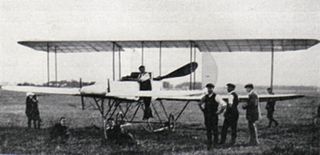
The S.E.1 was an experimental aircraft built at the Army Balloon Factory at Farnborough in 1911. Its place in aviation history is mainly that it was the first in the series of Royal Aircraft Factory designs - several of which played an important role in World War I.

The Airco DH.1 was an early military biplane of typical "Farman" pattern flown by Britain's Royal Flying Corps during World War I. By the time the powerplant for which it was designed was sufficiently plentiful it was obsolete as an operational aircraft, and apart from a few examples sent to the Middle East it served as a trainer and Home Defence fighter.

The Maurice Farman MF.7 Longhorn is a French biplane developed before World War I which was used for reconnaissance by both the French and British air services in the early stages of the war before being relegated to service as a trainer.

The Royal Aircraft Factory F.E.8 is a British single-seat fighter of the First World War designed at the Royal Aircraft Factory. It could not escape the drag penalty imposed by its tail structure and was no match for the Albatros fighters of late 1916.

The British Army Aeroplane No 1 or sometimes Cody 1 was a biplane built by Samuel Franklin Cody in 1907 at the Army Balloon Factory at Farnborough. It made the first recognised powered and sustained flight in the United Kingdom on 16 October 1908.

The Farman III, also known as the Henry Farman 1909 biplane, was an early French aircraft designed and built by Henry Farman in 1909. Its design was widely imitated, so much so that aircraft of similar layout were generally referred to as being of the "Farman" type.
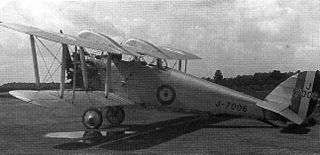
The de Havilland DH.42 Dormouse and its two variants the de Havilland DH.42A Dingo I and II were two-seat single-engined biplanes designed for fighter-reconnaissance and army cooperation roles. They did not achieve production.
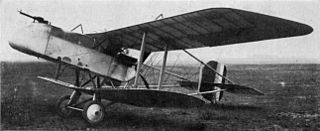
The Royal Aircraft Factory F.E.9 was a prototype British two-seat fighter-reconnaissance aircraft of the First World War. A single-engined pusher biplane of 1917, the F.E.9 had poor performance and handling, and only three were built.
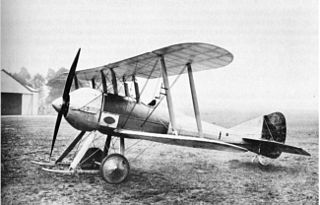
The Royal Aircraft Factory S.E.2 was an early British single-seat scout aircraft. Designed and built at the Royal Aircraft Factory in 1912–13 as the B.S.1, the prototype was rebuilt several times before serving with the Royal Flying Corps over the Western Front in the early months of the First World War.

The Dunne D.8 of 1912 was a tailless swept wing biplane, designed by J. W. Dunne to have inherent stability. One example was supplied to RAE Farnborough. License-built Burgess-Dunne models were used by the US Signal Corps and United States Navy and the short-lived Canadian Aviation Corps. It was the latter's first and only warplane.
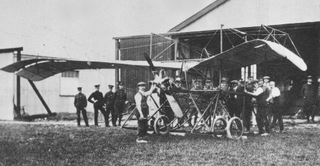
The Dunne D.7 was one of J. W. Dunne's swept wing tailless aircraft designed to have automatic stability, first flying in 1911. It was a single seat, single engined pusher monoplane developed from the unsuccessful D.6.
The Royal Aircraft Factory F.E.3 (also known as the A.E.1 was a British experimental single-engined pusher biplane built prior to the First World War. It was intended to be fitted with a shell-firing gun, but was quickly abandoned, being found to be structurally unsound.

The Short S.27 and its derivative, the Short Improved S.27, were a series of early British aircraft built by Short Brothers. They were used by the Admiralty and Naval Wing of the Royal Flying Corps for training the Royal Navy's first pilots as well as for early naval aviation experiments. An Improved S.27 was used by C.R. Samson to make the first successful take-off from a moving ship on 9 May 1912.
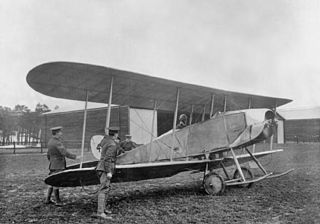
The Royal Aircraft Factory B.E.3 was a single-engined rotary engined biplane developed by the British Royal Aircraft Factory prior to the First World War. The B.E.4 and B.E.7 were virtually identical aircraft that differed only in the engine fitted.

The Paulhan biplane was a French experimental aircraft designed in 1910 by the successful aviator Louis Paulhan in collaboration with Henri Fabre. The prototype became the second aircraft bought by the British War Office: two further examples, differing in constructional detail, were built.
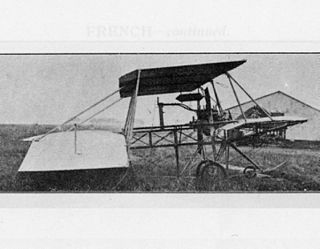
The Dunne-Huntington triplane, sometimes referred to as a biplane, was a pioneer aircraft designed by J. W. Dunne and built by A. K. Huntington. It was of unusual staggered triple-tandem configuration and an early example of an inherently stable aeroplane, flying regularly between 1910 and 1914.


















